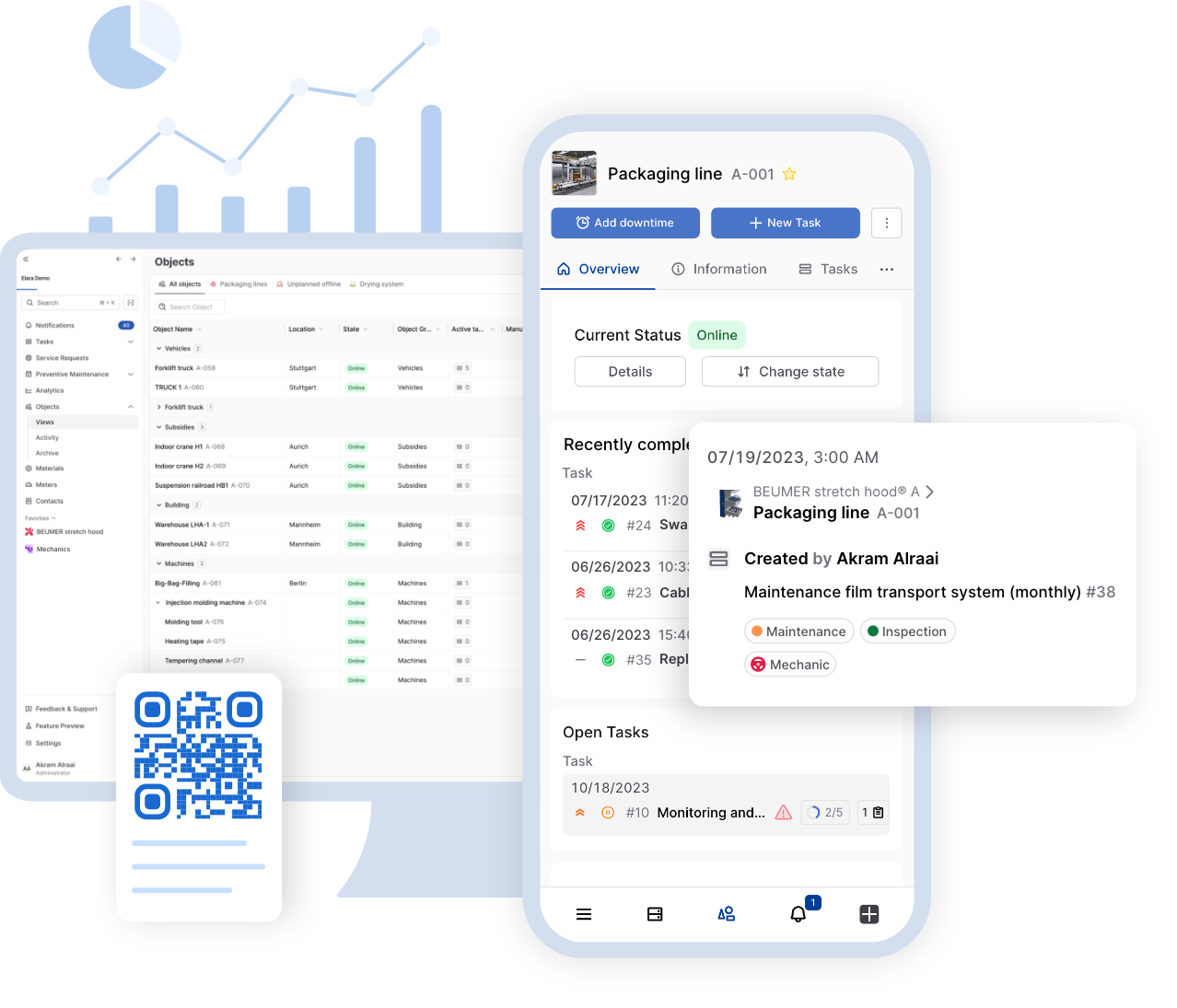The efficient management of assets and facilities is critical for organizations in today's dynamic business environment. It’s here that maintenance software stands out as a key tool for [...]

The efficient management of assets and facilities is critical for organizations in today’s dynamic business environment. It’s here that maintenance software stands out as a key tool for most operations leaders when it comes to achieving this goal. Maintenance software is important for companies in various industries as it helps to monitor, manage and optimize the condition of their plants, machinery, and equipment.
Because technology is constantly evolving, choosing the right maintenance software is crucial for businesses of all sizes. However, the question of whether to buy such software or develop it yourself always tends to pop up during this initial process, and it’s not easy to answer, either. We’d like to provide you with the story of one of our customers, and how they managed to solve this problem. They’re a medium-sized company in the logistics industry, and this was precisely the decision that had to be made.
Together using our customer’s journey as an example, we would like to help you weigh the pros and cons of the two options in order to make the most informed decision for your company.
The problem: should I develop maintenance software myself?
The idea of developing customized maintenance software in-house initially sounded appealing. This option offers complete control over the development process and allows the software to be designed exactly to the company’s specific requirements. In-house development could also potentially save the company money, as there are no extra license fees for an external software solution.
However, our customer soon realized that developing robust maintenance software can be a complex and resource-intensive undertaking, including a dedicated software team to maintain, upgrade and build internal software tools. It requires time, a group of talented people with expertise in software architecture and design. In addition, in-house development projects can actually often be more expensive than expected when you consider the cost of development, maintenance, and ongoing updates.

Practical tips and support for decision-makers
Before developing your own maintenance software, it is vital to ensure that you have the full support of your senior management team. The leadership team must understand the level of commitment as well as the ongoing challenges and costs associated with this endeavor. Secure support at the top management level and address the issues that will inevitably arise in advance. The German SME Protection (Deutscher Mittelstandsschutz) also emphasizes its importance, as software projects often fail because due to a lack of overview when it comes with just how much effort and resources are required to undertake such a project.
Next, it is important to set an appropriate budget and a realistic timeline for the project. Determining intermediate goals along the way helps monitor the progress of the overall project. These intermediate goals serve as points of reference and ensure that short-term goals are achieved throughout the process.
Also allow for sufficient time and financial resources — especially, for unforeseen roadblocks. Clearly define at the beginning of the design process what functions your system should fulfill. In software development, there is always a risk of being distracted by many nice-to-have features that can detract from the necessary functions. That’s why it’s always good to concentrate on a few main goals from the outset and implement them. The quality of the data must not be neglected either.
Establishing a process for collecting high-quality data during development is essential. Finally, it’s also important to keep in mind that the training, education, and motivation of employees is crucial to the success of maintenance software, as they are responsible for collecting and entering this data.
How do I know if buying maintenance software is better for my company?
The alternative to self-development is to buy maintenance software from an established provider. After thinking about the pros and cons of developing their own software, our customer decided to begin looking for a software provider as they simply weren’t big enough to justify the cost of creating their own maintenance software. That’s when they found out about Elara through the BEUMER Group and learned that the BEUMER Group, FedEX and Adidas already rely on Elara’s maintenance solution.
By having a good recommendation and the option to purchase a subscription from a reliable provider in the industry, our customer had immediate access to a mature and proven solution and was ready to save time and resources that they would otherwise have to spend on internal development.
In addition to the benefits that come with not building an internal solution, software solutions from external providers often offer a wider range of functions and regular updates, as well as professional support from the provider. This allows companies to focus on their core business instead of having to deal with the development and maintenance.
In the end, the entire Elara team has been working to improve our software since our founding in 2020, so building a similar library of features could potentially take years.
Practical tips and support for decision-makers
When choosing maintenance software, the final decision is crucial. Foremost, you should clearly define which functions are most relevant for your maintenance team. Our customer in this example also took enough time to conduct a preliminary analysis. As a result, they then knew exactly what to look for when they were watching product demos. They made sure to ask about typical scenarios and tested the best two or three providers in a test phase.
Our customer was careful to only consider providers that were active in their industry and had experience in their market segment — this meant less explaining in the future, and a much more collaborative partnership. They also requested references to learn from others’ experiences before committing.
After they were satisfied with the data quality of the data sets (as inaccurate data cannot be used to produce accurate analyses and reports), they began to change the work culture of employees and technicians and establish processes that encouraged and rewarded accurate information.

Elara’s top tips for finding the right maintenance software
The development of in-house maintenance software can be an attractive option for companies that are highly specialized and already have a core competence in software development. Before implementing such a project, however, we recommend a comprehensive cost-benefit analysis.
For most companies, such as our customer in this example, it makes sense to purchase a ready-made maintenance software due to the size of their operations. It’s advisable to take sufficient time to examine the various options that best suit the company’s objectives.
A practical test run, and extensive testing, are recommended before making a final decision. Also make sure that the selected provider provides the necessary support and training to guarantee the success of the implementation.
Furthermore, it is important to remember that the maintenance software should not only meet the current needs of your business but also be flexible enough to support future developments and requirements. Regularly updating and adapting the software is important to ensure smooth long-term operations. In addition, data protection and security should be a top priority when selecting and implementing maintenance software to protect sensitive company data and ensure compliance with legal regulations.
Find out how Elara has helped companies optimize their maintenance processes and achieve their goals.
[In the age of AI, you never know if you’re reading something copy and pasted directly from ChatGPT, or if an actual human sat down to write this with some cool facts from their boss or operations team. That’s why we created a short and simple introduction to how we create content at Elara.]




